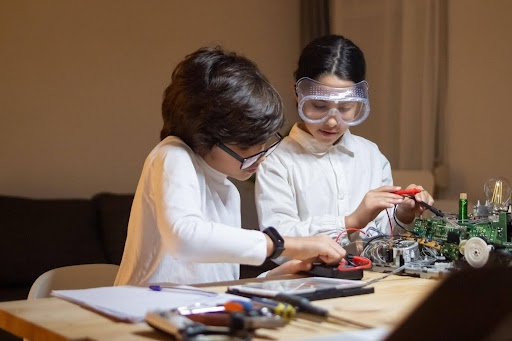The Role of Science Assemblies in Shaping Future Innovators
Elementary school is an important foundation for a child’s learning journey. During these early years, students start discovering their interests, passions, and curiosity about the amazing world around them. One wonderful way to nurture creativity, innovation, and critical thinking in young minds is through engaging elementary school science assemblies.
These events are not just educational, they’re fun and hands-on experiences that spark curiosity and make science exciting and accessible. In this article, we’ll explore how these science assemblies help shape the innovators to dream big and learn even more.
Fostering Curiosity in Young Minds
Every great scientist has an insatiable thirst for knowledge in their heart. The purpose of elementary school science assemblies is to spark students’ interest. These assemblies give kids an engaging way to explore science outside the textbook, whether it is through an exhibition of the animal kingdom or a demonstration of chemical reactions.
They bring science to life by transforming conceptual concepts into real-world experiences. These assemblies help youngsters develop a curious attitude, which is crucial for any future entrepreneur, by motivating them to pose questions and investigate potential answers.
Promoting Hands-on Learning
Although science is sometimes perceived as a discipline that demands memorizing facts and formulae, it actually benefits greatly from experimentation and creativity. Science school assemblies in elementary school usually involve interactive experiments and presentations that engage children in the learning process.
Children can participate, conduct experiments, and observe how scientific ideas work rather than just collecting information. This practical method promotes active participation, which enhances learning’s effectiveness and enjoyment. It encourages students to try new things and gives them the confidence to do so.
Building Problem-Solving Skills
Future innovators tackle problems while being curious. They take an innovative approach to difficulties and thrive on challenges. These critical thinking abilities are developed in a major way through science assemblies.
Science assemblies inspire students to think critically and logically, whether they are solving a chemical reaction or sorting out an experiment gone wrong. These kinds of experiences prepare students for the problem-solving abilities required for future employment in STEM professions.
Creating a Learning Environment
Everyone should have access to science, regardless of background, gender, or level of education. Science assemblies in elementary schools promote equality by engaging every student in a shared activity. They are made to appeal to a variety of learning preferences, including physical, visual, and auditory.
These assemblies bring teachers, parents, and students together in an environment of learning and discovery. These activities break down barriers and encourage kids from all backgrounds to pursue STEM fields by making science understandable and enjoyable.
Encouraging Teamwork
Collaboration and teamwork are typically the sources of the best ideas. Science assemblies in elementary schools give kids the chance to collaborate on practical projects, which promotes a feeling of collaborative learning. Students are encouraged to exchange ideas and assist one another in solving problems in science assemblies.
They develop cooperation, leadership, and communication skills as they work together to overcome a scientific challenge. Leaders with critical thinking abilities and the skills to influence others are developed in these assemblies.

